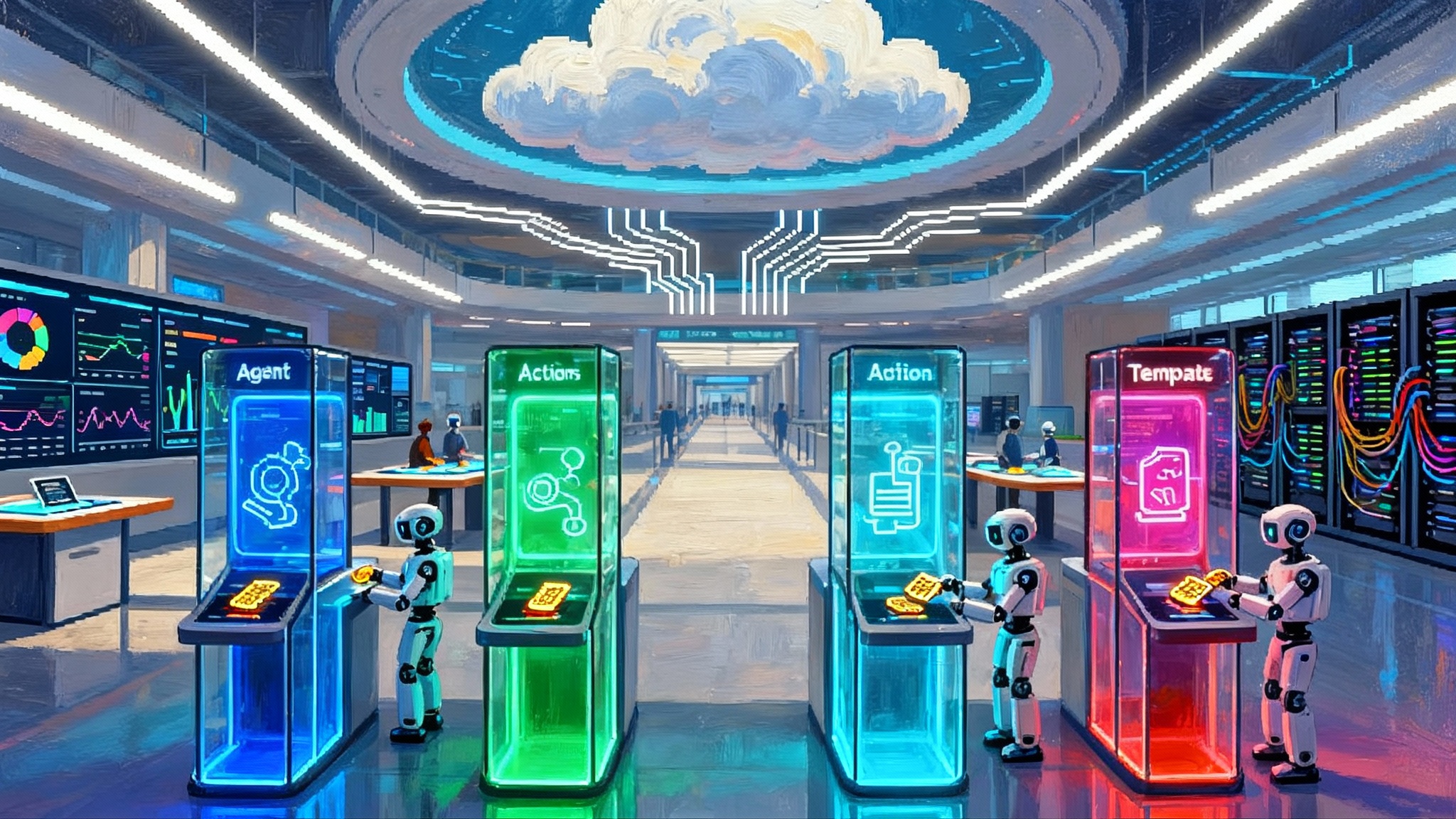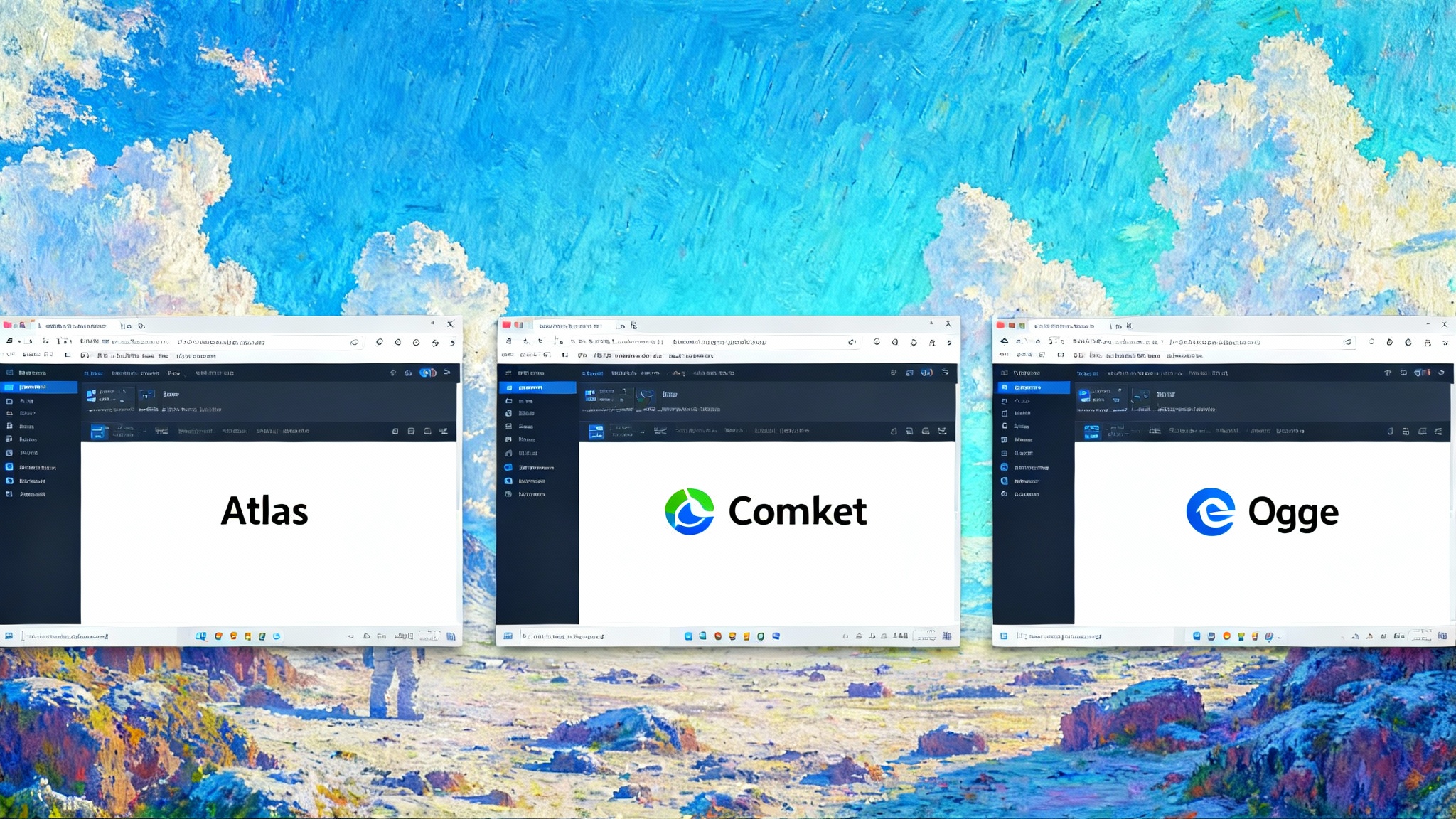OpenAI’s AWS Pivot Makes Multi Cloud the New AI Default
On November 3, 2025, OpenAI committed to a multi-year build on AWS. For builders, that turns multicloud from a hedge into the default architecture for reliable, low‑latency, always‑on agents.

The week multicloud stopped being a hedge
On November 3, 2025, OpenAI announced a multi-year AWS partnership and AWS detailed the agreement and capacity timeline. The headline is simple: OpenAI will run meaningful parts of its workloads on more than one hyperscale cloud. The implication is not simple at all. This move tells builders that the default architecture for large language model and agent systems is no longer single cloud. The new baseline is multicloud designed in from day one.
The why is as important as the what. Training and serving the current generation of large language models and the emerging wave of autonomous software agents requires three things at once: persistent state that survives model and process restarts, predictable tail latency at the 95th and 99th percentiles, and reliability patterns that survive real world chaos such as regional incidents, supply constraints, and shifting compliance rules. One provider can deliver a lot. More than one provider can deliver the rest.
From demos to durable agents
Most teams can ship a chat interface on a single cloud. The jump to always on agents, the kind that watch a market overnight, reconcile invoices on the last business day of the month, or keep a fleet of digital twins aligned to physical assets, forces new disciplines. This shift is already visible as agent marketplaces go live and the browser becomes the agent runtime.
- Persistent identity and memory. An agent needs a durable account of who it is and what it has done. That means a state layer separate from the model runtime. A practical pattern is a multiregion database that stores agent profiles, tools, permissions, and conversation graphs, coupled to an object store for long lived artifacts. When the runtime moves between regions or clouds, the state follows without loss.
- Scheduled and event driven work. Agents in production need calendars and triggers, not just prompts. That introduces queues and schedulers with cross cloud equivalents so that a failover does not lose the backlog.
- Tool use with guardrails. Real agency means calling software, not only producing text. Tool catalogs, execution sandboxes, and policy engines must be portable, or at least have compatible surrogates on each cloud.
OpenAI’s decision is a signal that the industry is building for these workloads, not just for interactive chats. The capacity to place long lived, tool using agents across more than one cloud is the shortest path to durability.
Lower tail latency by design
Average latency matters less than the slowest outliers in customer facing systems. Tail latency at the 95th and 99th percentiles is what breaks service level commitments during spikes or when a single region runs hot.
Multicloud gives you new routing levers:
- Regional diversity without shared fate. Running the same model family in two clouds lets you split traffic by proximity or by observed congestion. If one provider’s regional fiber path is congested during a content delivery event, the other provider’s path is usually independent.
- Active active inference with hedged requests. A request can be sent to two regions and the slower one canceled as soon as the faster one returns. The trick is to do this only when the user experience demands it, and to cap the number of duplicates to control cost. In practice, hedging a small percentage of requests eliminates most tail pain.
- Specialized instance mix. Some clouds will have newer accelerators first in a given region, while others excel at high memory footprints. Placement by shape lets you meet different request profiles with fewer slow paths.
The result is not simply a lower mean, it is a tighter distribution. That is the difference between a demo and a dependable feature.
Reliability and compliance become patterns, not exceptions
Real world reliability is no longer about surviving a single region outage. It is about surviving the combined effect of release mistakes, quota changes, and rare but real incidents that ripple across a provider. Multicloud enables three practical patterns:
- Control plane escape hatches. Keep your orchestration and release management in a neutral control plane that can talk to multiple providers. When one provider rate limits an API, you still have a path to shift capacity by policy, not by a week of reconfiguration.
- Stateful failover without data loss. If your agent state is replicated with low lag across independent providers, you can fail over without telling users to retry later. This is hard, but it is the right kind of hard.
- Compliance by placement, not by paperwork. Different clouds have different certifications and sovereign controls in different countries. Multicloud lets you meet residency and industry rules by placing workloads where the rule is easiest to satisfy, instead of lobbying for exceptions.
For enterprises with internal audit teams, being able to demonstrate that a policy can move workloads away from a newly noncompliant region in hours, not months, is a strong control.
The bargaining power shift on compute supply
The unsung driver of multicloud is simple economics. Generative AI requires accelerators such as graphics processing units and specialized training chips. Availability waves across providers are lumpy. Prices and quotas differ by region, instance family, and commitment type.
By committing meaningful spend to more than one cloud, a company gains credible alternatives when negotiating for capacity. This changes pricing and delivery conversations in three ways:
- Substitution power. If a provider cannot deliver the requested capacity in the quarter, a multicloud buyer can move training or serving to another provider without missing a product milestone. That prospect tends to improve the offer on the table.
- Portfolio pricing. Commitments can be structured as a portfolio. Reserve a baseline of predictable serving on one cloud, acquire burst training blocks on another, and keep a small pool of interruptible capacity for experiments. The whole can be cheaper and more available than a single large reservation.
- Feature leverage. Providers differentiate with networking, storage throughput, and tooling. When you can walk away with a credible plan B, feature gaps are closed faster, often at preferential rates.
This is not about punishing providers. It is about matching a complex and growing demand curve for compute with a wider supply surface.
What changes in the large language model and agent stack
The model and agent stack has been converging on a few layers. Multicloud does not tear up the stack, it clarifies where portability must exist.
- Prompting and policy. Prompts, safety rules, and organization policy should be versioned outside any cloud specific service. Treat them as code.
- Runtime abstraction. Use a model gateway or inference router that can target multiple providers with a common request shape. If you need streaming tokens, function calling, or tool execution, the abstraction should expose those features without locking you to one vendor’s dialect.
- State layer. Store agent memory, documents, and features in systems that have first class replication across providers, or build an explicit sync pipeline with tests and alerts. Avoid provider specific extensions that cannot be emulated elsewhere.
- Tooling and skills. Every cloud has a toolbox. Choose a small subset with clear cross cloud matches. For example, queues, schedulers, object storage, and secret managers have equivalents across providers. Invest in adapters and acceptance tests so that a deployment can swap one for another with configuration rather than code changes.
The test for each layer is simple. Could you move 10 percent of traffic to a different provider in a week without a large rewrite? If not, the layer is too sticky.
Cost, with a builder’s spreadsheet
Multicloud can either save money or add waste. The difference is in the accounting model. Builders should track effective cost per token for serving and effective cost per hour of useful training for model development, broken down into the parts you can influence. Advances like adaptive reasoning reset the cost curve, but only if the platform costs are managed.
Serving cost per token is shaped by:
- Instance price per hour for the chosen accelerator and memory shape
- Model tokens per second achieved, including batching and parallelism
- Overhead from routing, guardrails, and security functions
- Hedged request rate and cancel latency
- Egress charges from returning results across clouds or to clients
Training cost per useful hour is shaped by:
- Achieved throughput in tokens per second per chip
- Checkpoint frequency and checkpoint cost to storage
- Failure rate and restart penalties
- Data pipeline cost and locality, including preprocessing
- Reservation discounts versus on demand and spot mixes
Multicloud lets you improve several of these inputs. You can select the best region for egress to your largest customer base, choose the instance family with the best tokens per second this quarter, and negotiate reservations only where they pay back. The trap is paying two sets of idle bills. The antidote is a simple rule: keep one cloud as the primary for a given workload at any time, and use the second as a hot standby or as a surge outlet, not as a permanent mirror.
A deployment playbook for the next 90 days
If you are building or operating an agentic application, you do not need a thousand page strategy. You need a shortlist of actions that shift your risk and cost curves now.
- Choose a neutral control plane. Pick an orchestration system for agents, prompts, and workflows that can talk to at least two inference back ends. Ensure it supports streaming responses, function calling, and tool execution consistently.
- Separate state from compute. Place agent memory and artifacts in stores that can be replicated across providers. If you must use a provider specific store for a feature, isolate it behind a service facade and test the sync path to an alternative.
- Add a routing layer. Introduce a gateway that can direct requests by region, by observed latency, and by cost. Start by shifting five percent of traffic on low risk endpoints to a second provider to exercise the path.
- Implement hedged requests sparingly. Enable hedging only for endpoints where user experience is highly sensitive to tail latency. Cap the duplicate rate and measure cancel times.
- Build a second tool belt. For every queue, scheduler, and secret manager you rely on, select and test the equivalent on the second cloud. Bake those adapters into your deployment recipes.
- Set a budget guardrail. Define an automated monthly cap for cross cloud egress and duplicate inference. Alert early when tests threaten to exceed it.
These steps are not theoretical. They are the minimum moves to make a single cloud deployment portable and to gain option value from the second cloud without paying double.
Security and compliance without reinventing the program
Security leaders worry that multicloud doubles the attack surface. It does, but the right approach contains the risk while raising the bar for attackers and auditors alike. The agent trust stack makes these controls concrete.
- Uniform identity management. Use a centralized identity provider to issue short lived credentials for workloads, then map those identities to provider specific roles. This avoids long lived secrets spread across systems.
- Policy as code. Express access policies, data residency rules, and audit hooks in code that is evaluated on every deployment. Run the same policy set in each cloud and fail deployments that drift.
- Data minimization. Keep the minimal necessary data in each region and each cloud. Archive and delete aggressively. This reduces both exposure and egress cost.
When regulators ask how you would move a critical workload to maintain compliance, you can point to live runbooks and recent drills rather than slide decks.
How this changes the platform market
OpenAI making room for another hyperscaler does not just move workloads. It moves minds. Platform teams at enterprises and startups will expect their vendors to support at least two clouds for inference endpoints, storage, and orchestration. Managed services and open source projects that make this easy will gain share. Services that assume a single cloud will face slower adoption and higher churn.
Chip suppliers and cloud providers will respond in kind. Expect more cross listing of equivalent instance families, more attention to migration guides, and more pricing that rewards portable workloads. The practical outcome is healthy competition that lowers the time to capacity and raises the baseline of reliability.
What not to do
It is tempting to mirror everything everywhere and call it multicloud. That is the most expensive way to learn. Avoid these traps:
- Dual mastering every stateful system. Keep one clear leader for write heavy data and replicate to a follower, with planned roles for failover.
- Building a bespoke abstraction for every difference. Use battle tested libraries and gateways before inventing your own.
- Believing that training or serving will be cheaper everywhere. It will not. Choose the primary per workload based on current performance and pricing, and revisit quarterly.
Restraint is a feature. Use the second cloud to buy time, not to double your surface area without purpose.
The next platform decade, starting now
The last decade of cloud computing taught teams to start in one region and scale out carefully. The next decade of artificial intelligence will teach teams to start in one cloud and scale across carefully. OpenAI’s move on November 3, 2025 does not make multicloud inevitable for everyone, but it makes it rational for anyone with meaningful uptime, latency, or compliance requirements.
The practical takeaway is clear. Treat multicloud as an operating system decision, not as a procurement afterthought. Put a neutral control plane at the center, keep state portable, route by latency and cost, and practice failovers like security drills. The reward is simple to measure: fewer late night pages, fewer launch delays due to capacity, and more leverage when you plan the next major model upgrade.
If the past year was about proving that autonomous agents can do real work, the next year will be about keeping them working when the network is noisy, when a region is down, or when a new rule appears overnight. Multicloud is how you make that boring. Boring is what reliable systems feel like to users.
And that is the quiet breakthrough inside this headline. Multicloud is no longer a hedge. It is the standard kit for building agents that never have to apologize for being offline.








